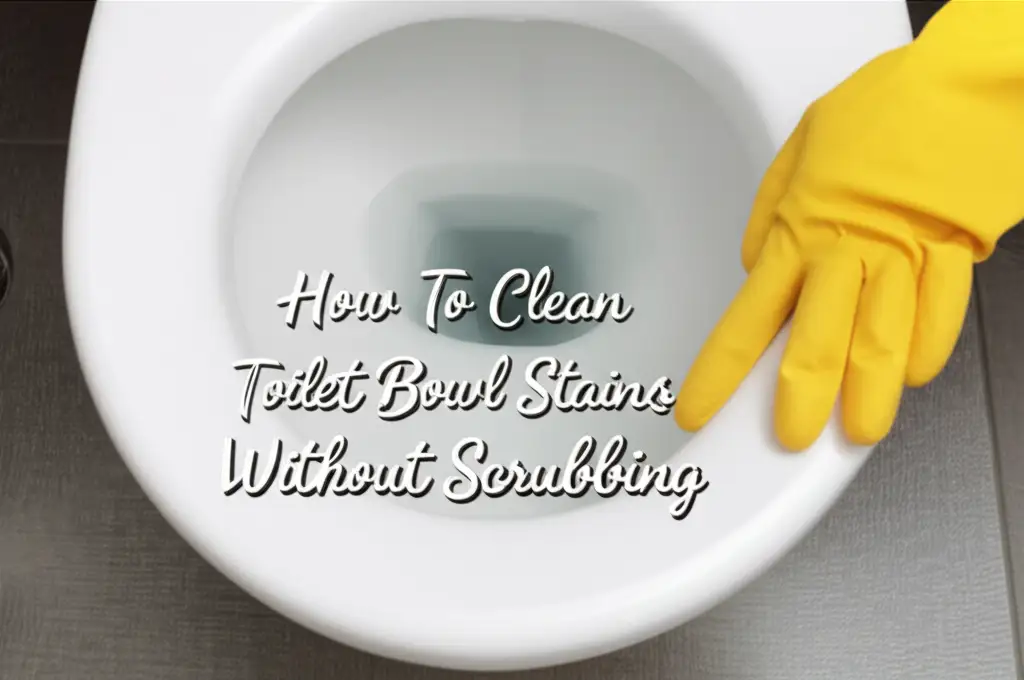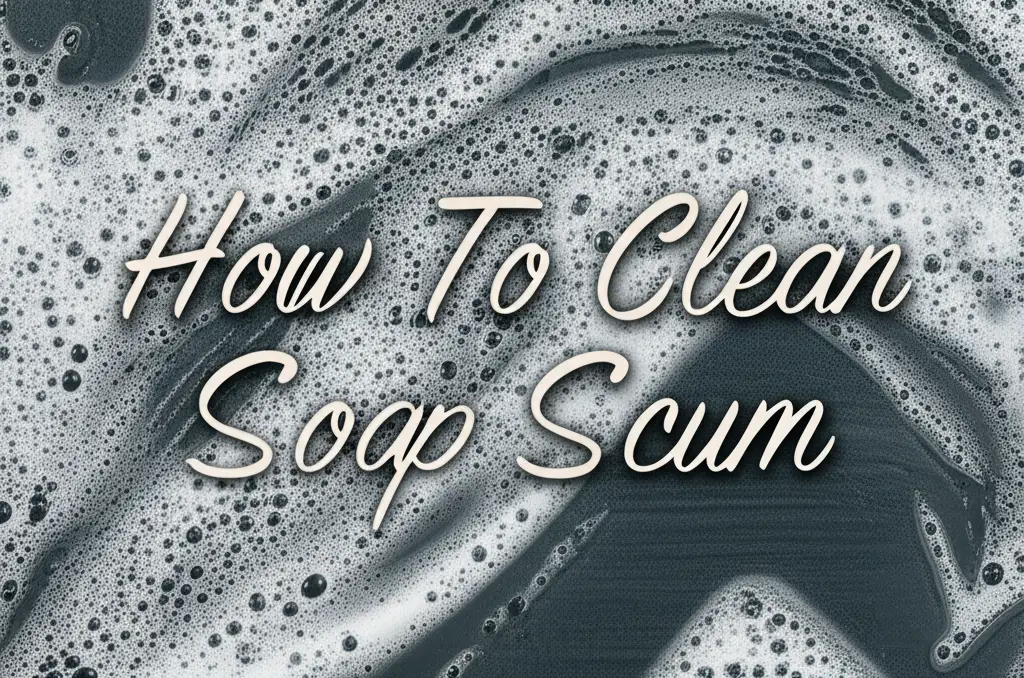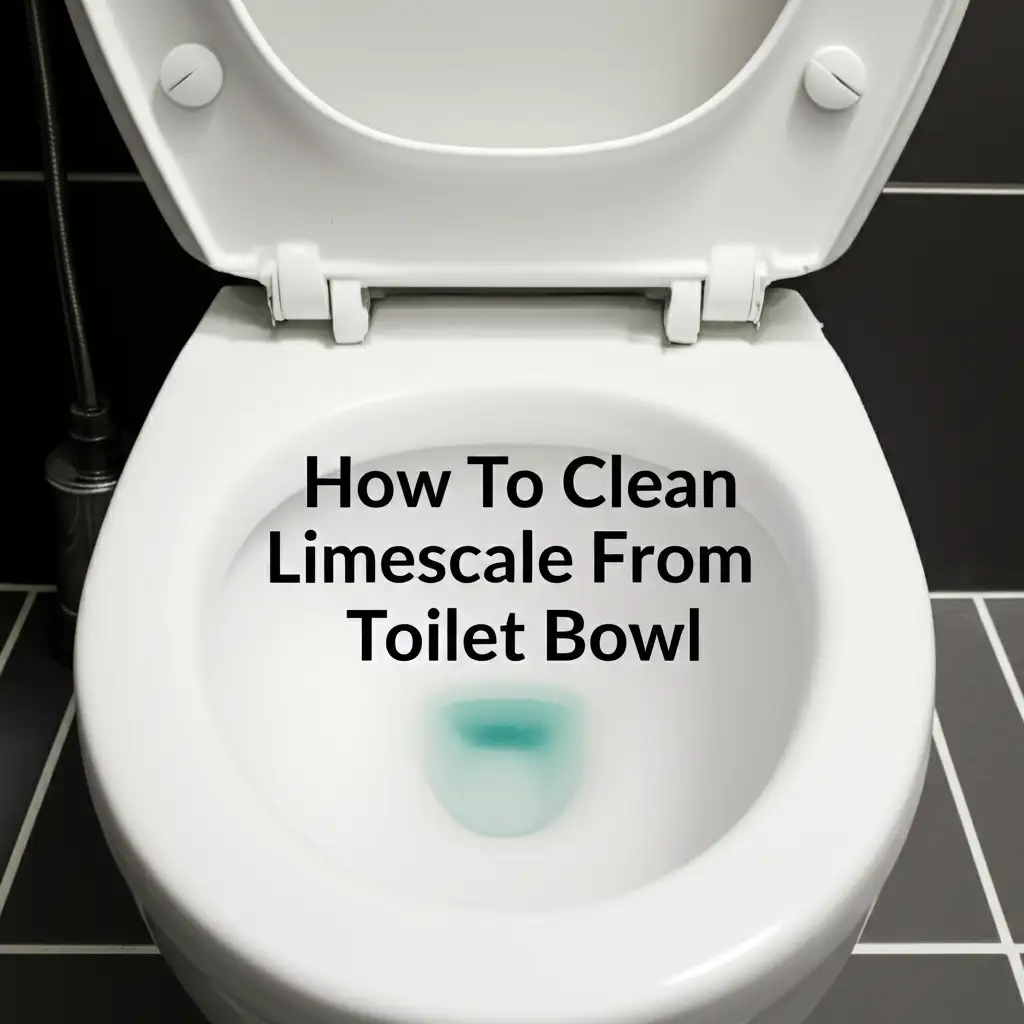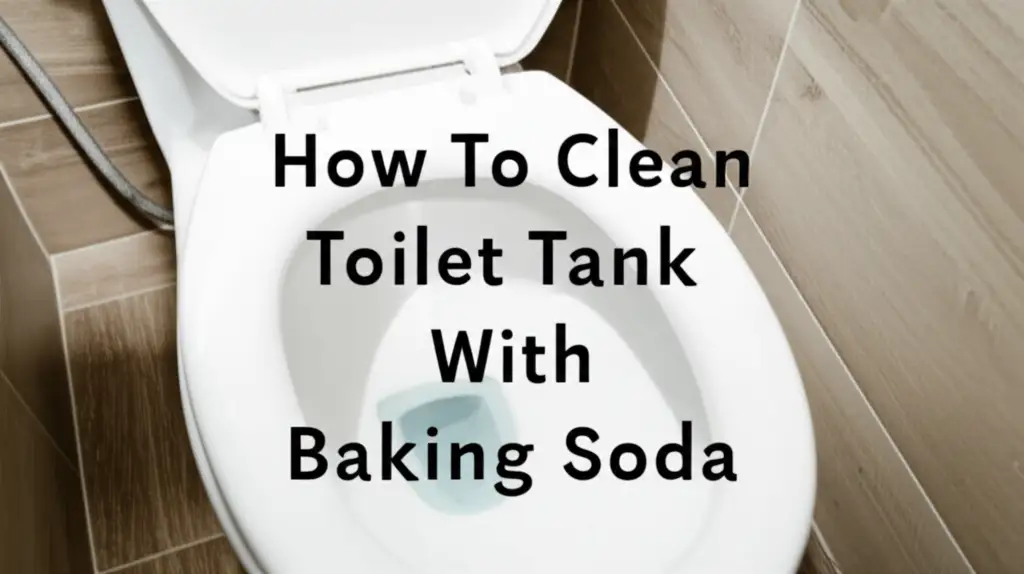· Home Cleaning · 15 min read
How To Clean Toilet Bowl Stains Without Scrubbing

Effortless Cleaning: How To Clean Toilet Bowl Stains Without Scrubbing
Cleaning the toilet is rarely a favorite task for anyone. The thought of scrubbing away stubborn stains often makes us put it off. But what if I told you there’s a better way? Imagine a clean, sparkling toilet bowl without the muscle work.
Many people face frustrating toilet bowl stains. These come from hard water, minerals, or rust buildup. Traditional cleaning often means heavy scrubbing. However, effective methods exist to clean toilet bowl stains without scrubbing. This article explores these no-effort techniques. We will cover natural remedies and commercial products. Get ready to transform your bathroom cleaning routine.
Takeaway
- Use Acidic Agents: Vinegar, citric acid, or borax break down mineral and rust stains.
- Apply and Wait: Let cleaning solutions sit for hours or overnight for best results.
- Choose the Right Tool: A toilet brush or flush helps clear loosened debris.
- Prevent Future Buildup: Regular maintenance and in-tank cleaners reduce new stains.
How to clean toilet bowl stains without scrubbing? You can clean toilet bowl stains without scrubbing by using specific acidic or enzymatic cleaners. These products break down mineral deposits, rust, and organic stains. Apply the chosen solution directly to the stains, let it sit for several hours or overnight, and then simply flush the toilet to rinse away the loosened grime.
Understanding Common Toilet Bowl Stains
Toilet bowls can develop several types of unsightly stains. Knowing the stain type helps you choose the right cleaning method. Most stains are not a sign of poor hygiene. They usually indicate mineral deposits from your water supply.
Hard water stains are very common. These appear as white, yellow, or brown rings. They form when minerals like calcium and magnesium build up. Your water evaporates, leaving these deposits behind. Rust stains show up as reddish-brown marks. They come from iron particles in your water or aging pipes. Sometimes, black stains appear, often from mold or mildew. Knowing what you are fighting helps you win the battle.
The Science Behind Stain Formation
Stains in toilet bowls happen due to mineral accumulation. Water contains dissolved minerals. When water sits or evaporates, these minerals remain. They cling to surfaces, creating layers over time. This process is similar to how hard water leaves spots on shower glass.
Hard water also contains metals like iron. Iron oxidizes, or rusts, when exposed to air and water. This forms the red or orange rust stains we often see. Mold and mildew thrive in moist, dark environments. The toilet bowl rim and waterline offer ideal conditions for their growth. Understanding this process helps us select effective no-scrub solutions.
The Power of Vinegar and Baking Soda for No-Scrub Cleaning
Vinegar and baking soda are excellent natural cleaners. They offer a powerful, yet gentle, way to clean toilet bowl stains without scrubbing. This combination works wonders on hard water rings and light mineral deposits. It is also safe for most septic systems.
I often recommend this method to friends. It uses items you likely already have at home. This approach saves you money on harsh chemical cleaners. It also reduces your exposure to strong fumes. You can achieve a sparkling clean bowl with minimal effort.
Using This Natural Duo
First, empty some water from the toilet bowl. You can do this by turning off the water supply and flushing. Alternatively, you can use a cup to scoop out excess water. This step exposes more of the stained surface. It allows the cleaning agents to work directly on the grime.
Next, pour one cup of white vinegar into the toilet bowl. Make sure it coats the stained areas. Let the vinegar sit for at least an hour. For tougher stains, let it sit for several hours or even overnight. The acid in the vinegar starts to break down mineral deposits.
After the vinegar has soaked, sprinkle half a cup of baking soda over the vinegar-soaked stains. The baking soda will react with the vinegar. This reaction creates a fizzing action. This fizz helps lift and loosen the grime from the bowl’s surface. Let this mixture bubble for about 30 minutes. The reaction often loosens grime that even stubborn hard water stains leave behind. You can learn more about this reaction and other uses in our guide on how to clean with vinegar and baking soda.
Finally, use your toilet brush to lightly swish the water around. You do not need to scrub vigorously. The loosened stains should easily come away. Flush the toilet. Repeat the process for very stubborn stains. This method also helps remove black stuff that sometimes appears in toilet bowls. Consider reading our guide on how to clean black stuff in toilet bowl for more specific tips.
Lemon Juice and Borax: Gentle Alternatives for Stain Removal
Lemon juice and borax offer another fantastic, low-effort approach to tackle toilet bowl stains. Lemon juice is naturally acidic. It effectively dissolves hard water and mineral buildup. Borax is a natural mineral. It acts as a mild abrasive and a powerful cleaner.
This combination is gentler than some harsh chemicals. It still delivers strong cleaning power. Using these ingredients leaves your bathroom smelling fresh. It also avoids strong chemical odors. I find this method particularly appealing for regular maintenance.
Applying Lemon Juice and Borax
First, remove as much water as possible from the toilet bowl. This ensures the cleaning solution can directly contact the stains. You can turn off the water valve and flush. Alternatively, you can use a small bucket or cup to remove the water manually. This step is crucial for direct application.
Next, sprinkle about a quarter cup of borax evenly over the stained areas. Focus on the waterline and any visible mineral rings. Allow the borax to sit for at least 30 minutes. Borax helps loosen the grime and prepares the surface.
After the borax has settled, squeeze the juice of one to two lemons directly onto the borax-covered stains. The citric acid in the lemon juice reacts with the borax. This reaction creates a mild effervescence. It helps to further break down and lift the stains. Let the lemon juice and borax mixture sit for at least an hour. For heavier stains, you can let it sit overnight.
The next morning, simply flush the toilet. The stains should rinse away with the water. If any residue remains, a light swish with a toilet brush will dislodge it. Remember, the goal is not scrubbing, but allowing the chemicals to do the work. This method is surprisingly effective for light to moderate hard water stains. It is a great option for routine cleaning.
Commercial No-Scrub Toilet Cleaners
For those who prefer a ready-made solution, many commercial no-scrub toilet cleaners exist. These products are specifically formulated to dissolve tough stains without manual effort. They often contain strong acids or bleaching agents. These ingredients break down hard water deposits, rust, and organic matter.
It is important to choose the right product for your specific stain. Always read the label instructions carefully. Different cleaners target different types of stains. Some are better for rust, while others excel at limescale. I have found that following directions closely provides the best results.
Selecting and Using Commercial Products
When choosing a commercial no-scrub cleaner, look for keywords like “descaler,” “rust remover,” or “hard water stain remover.” Products containing hydrochloric acid, phosphoric acid, or oxalic acid are effective for mineral and rust stains. For organic stains or mildew, cleaners with bleach or hydrogen peroxide work well. Always ensure the product is safe for your toilet’s material.
To use these cleaners, simply apply the product as directed by the manufacturer. Most require you to squirt the liquid under the rim and onto the stained areas. Ensure the product covers all affected surfaces. Then, allow the cleaner to sit for the recommended duration. This period can range from 15 minutes to several hours. The chemicals do the hard work during this waiting time.
After the waiting period, simply flush the toilet. The loosened stains should wash away with the water. For extremely stubborn stains, a second application might be necessary. Or you can use a toilet brush for a very light agitation. Always wear gloves when handling commercial cleaners. Ensure good ventilation in your bathroom. This prevents inhaling strong fumes. Remember, these powerful cleaners can also tackle hard water stains on other surfaces, like stainless steel. You might find our article on how to clean hard water stains from stainless steel sink helpful for other areas in your home.
Automatic Toilet Bowl Cleaners for Continuous Freshness
Automatic toilet bowl cleaners offer a convenient, hands-off approach to maintaining a clean toilet. These products typically come as tablets or liquid dispensers placed in the toilet tank. They release cleaning agents with each flush. This continuous action helps prevent new stains from forming and can slowly break down existing, lighter stains.
While they may not remove deeply set-in stains instantly, they significantly reduce the need for manual cleaning. I consider these a great preventative measure. They keep your toilet fresher between deep cleans. They provide a constant low-level cleaning action.
Types of Automatic Cleaners
There are several types of automatic toilet bowl cleaners. The most common are drop-in tablets. These tablets slowly dissolve, releasing bleach or blue dye with each flush. Some tablets contain detergents or enzymes. You simply drop them into the toilet tank.
Another option is a liquid dispenser. These attach to the inside of the tank. They release a measured amount of cleaner into the water. Some systems even connect to the overflow tube. This ensures the cleaner only enters the bowl during a flush. Each type works to keep the bowl cleaner with minimal effort from you.
While convenient, automatic cleaners have considerations. Bleach-based tablets can sometimes damage internal toilet tank components. This includes rubber seals and flappers. Over time, this damage can lead to leaks. Look for bleach-free options if you are concerned about this. Always read product reviews and check the ingredients before using them. They are generally effective for maintaining cleanliness and preventing future buildup. They are not a magic solution for heavy, old stains. For persistent hard water stains, you might need a more targeted approach, similar to what’s used for hard water stains on shower glass.
Preventing Future Toilet Bowl Stains
The best way to clean toilet bowl stains without scrubbing is to prevent them from forming. Regular maintenance is key. Proactive steps keep your toilet sparkling. This minimizes the need for intensive cleaning. Prevention saves time and effort in the long run.
I believe in consistent, small efforts. These lead to big results. A few simple habits can make a huge difference. They help you avoid stubborn stains altogether. This approach keeps your bathroom looking its best.
Simple Habits for a Cleaner Toilet
- Regular Flushing: Flush your toilet frequently. This helps wash away minerals before they can settle and form stains. Especially after cleaning, a good flush ensures all residues are gone.
- Weekly Vinegar Rinse: Pour a cup of white vinegar into the toilet bowl once a week. Let it sit for 30 minutes, then flush. This simple act helps prevent mineral buildup. It keeps the water free of new deposits.
- Toilet Tank Tablets: Use bleach-free in-tank cleaning tablets. These release cleaning agents with every flush. They continuously work to prevent stain formation. Be sure to choose ones safe for toilet components.
- Maintain Your Water Softener: If you have hard water, ensure your water softener is working correctly. A properly functioning softener reduces mineral content. This is the root cause of many toilet stains. Regularly check its salt levels.
- Address Leaks Promptly: A constantly running toilet can worsen hard water stains. The continuous flow allows more minerals to deposit. Fix leaks quickly to prevent this. A leaky toilet can be a hidden source of persistent stains.
- Ventilation: Ensure your bathroom is well-ventilated. This helps prevent mold and mildew growth. Mold loves damp, still air. Good airflow keeps the bowl drier and less hospitable to these organisms.
By incorporating these simple habits, you can significantly reduce. You might even eliminate the need for scrubbing. You will enjoy a cleaner, fresher toilet with minimal effort. Prevention truly is the best form of cleaning.
Safety First: Precautions for No-Scrub Cleaning
While no-scrub cleaning methods aim for ease, safety remains paramount. Whether you use natural remedies or commercial products, proper precautions are necessary. Understanding potential risks helps ensure a safe cleaning experience. My priority is always to protect myself and my home.
Always read product labels thoroughly. Pay attention to warnings and instructions. Following these guidelines helps prevent accidents. It also ensures the effectiveness of the cleaning agents. Safety makes the cleaning process worry-free.
Essential Safety Guidelines
- Ventilation is Crucial: When using any cleaning agent, especially commercial ones, ensure good airflow. Open windows and turn on the bathroom fan. This disperses fumes and prevents inhalation of harsh chemicals. Poor ventilation can cause respiratory irritation.
- Wear Protective Gear: Always wear rubber gloves to protect your skin. If using strong acids or bleach, consider eye protection. Splashes can cause serious damage to eyes. Protective gear minimizes direct exposure.
- Never Mix Chemicals: This is a critical rule. Do not mix different cleaning products. Combining bleach with acids (like vinegar or toilet bowl cleaners) creates toxic gases. These gases can be extremely dangerous or even fatal. Always use one product at a time. Flush thoroughly before introducing another cleaner.
- Store Products Safely: Keep all cleaning agents out of reach of children and pets. Store them in a cool, dry place. Ensure bottles are tightly sealed. Proper storage prevents accidental ingestion or spills.
- Test in an Inconspicuous Area: If you are unsure about a product, test it first. Apply a small amount to an unseen part of the toilet bowl. This ensures it does not damage the porcelain or finish. This step is especially important for older fixtures.
- Follow Directions: Adhere strictly to the manufacturer’s instructions. This includes application amount, dwell time, and disposal. Overuse or incorrect application can be harmful. It can also damage your toilet or plumbing system.
By following these safety tips, you can effectively clean your toilet bowl without scrubbing. You will maintain a clean and safe home environment. Your efforts will yield sparkling results without putting yourself at risk.
FAQ Section
Q1: How long does it take for no-scrub cleaners to work on toilet stains?
Most no-scrub cleaners require a waiting period. Natural solutions like vinegar or lemon juice often need several hours or even overnight. Commercial products usually work faster, typically within 15 minutes to an hour. Always check the product label for specific instructions. Allowing adequate dwell time is crucial for effective stain breakdown without scrubbing.
Q2: Can no-scrub methods remove old, stubborn rust stains?
Yes, no-scrub methods can effectively remove old, stubborn rust stains. For these, specific rust-removing cleaners with oxalic acid or similar ingredients work best. Natural options like lemon juice or vinegar might require multiple applications or longer soaking times. Consistent application breaks down even persistent rust deposits over time.
Q3: Are automatic toilet bowl cleaners safe for all plumbing systems?
Automatic toilet bowl cleaners are generally safe, but bleach-based tablets can degrade rubber components in toilet tanks over time. This can lead to leaks. Look for bleach-free or enzyme-based automatic cleaners for older toilets or if you have concerns. Always confirm compatibility with your plumbing system, especially for septic tanks.
Q4: How often should I use no-scrub toilet cleaning methods?
The frequency depends on your water quality and stain severity. For hard water areas, a weekly or bi-weekly application of a no-scrub solution is ideal for maintenance. For lighter stains or preventative care, monthly treatment might suffice. Automatic in-tank cleaners provide continuous, passive cleaning with every flush.
Q5: What is the best natural alternative for cleaning toilet stains without scrubbing?
The best natural alternative is a combination of white vinegar and baking soda. Pour one cup of vinegar into the bowl, let it sit for an hour, then add half a cup of baking soda. The fizzing action helps loosen stains. Allow it to sit for another 30 minutes, then flush. This combination effectively tackles hard water and mineral deposits.
Q6: Can I use Coca-Cola to clean toilet bowl stains without scrubbing?
Yes, Coca-Cola can help clean toilet bowl stains without scrubbing due to its phosphoric acid content. Pour a can of Coca-Cola into the bowl, ensuring it covers the stains. Let it sit for several hours or overnight. The acid will work to dissolve mineral deposits. Flush to rinse. It is a milder option, often effective for lighter stains.
Conclusion
Cleaning toilet bowl stains without scrubbing is not just a dream; it is a very achievable reality. We have explored several effective methods, from natural remedies like vinegar and baking soda to powerful commercial solutions and automatic cleaners. Each approach offers a hands-off way to tackle stubborn hard water, rust, and mineral deposits. By simply applying the right solution and allowing it to work its magic, you can effortlessly achieve a sparkling clean toilet.
Remember, prevention plays a crucial role in maintaining a pristine toilet bowl. Regular, simple habits can stop stains before they even begin. Always prioritize safety by using proper ventilation and never mixing cleaning products. Embrace these no-scrub techniques to transform your bathroom cleaning routine. You will enjoy a cleaner, fresher home with minimal effort. Say goodbye to strenuous scrubbing and hello to effortless toilet maintenance. Try these methods today and reclaim your weekend!
- toilet cleaning
- stain removal
- no-scrub cleaning
- bathroom cleaning
- hard water stains




